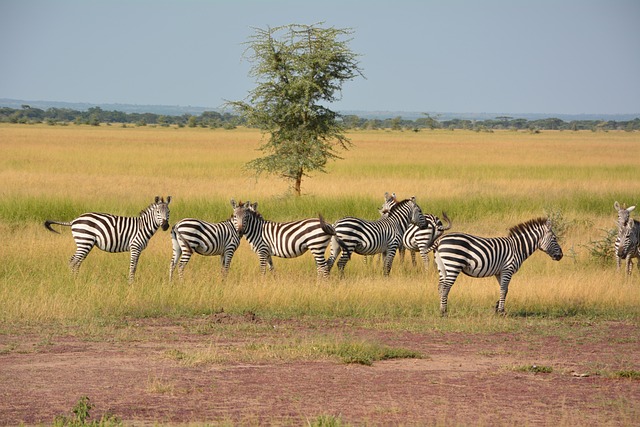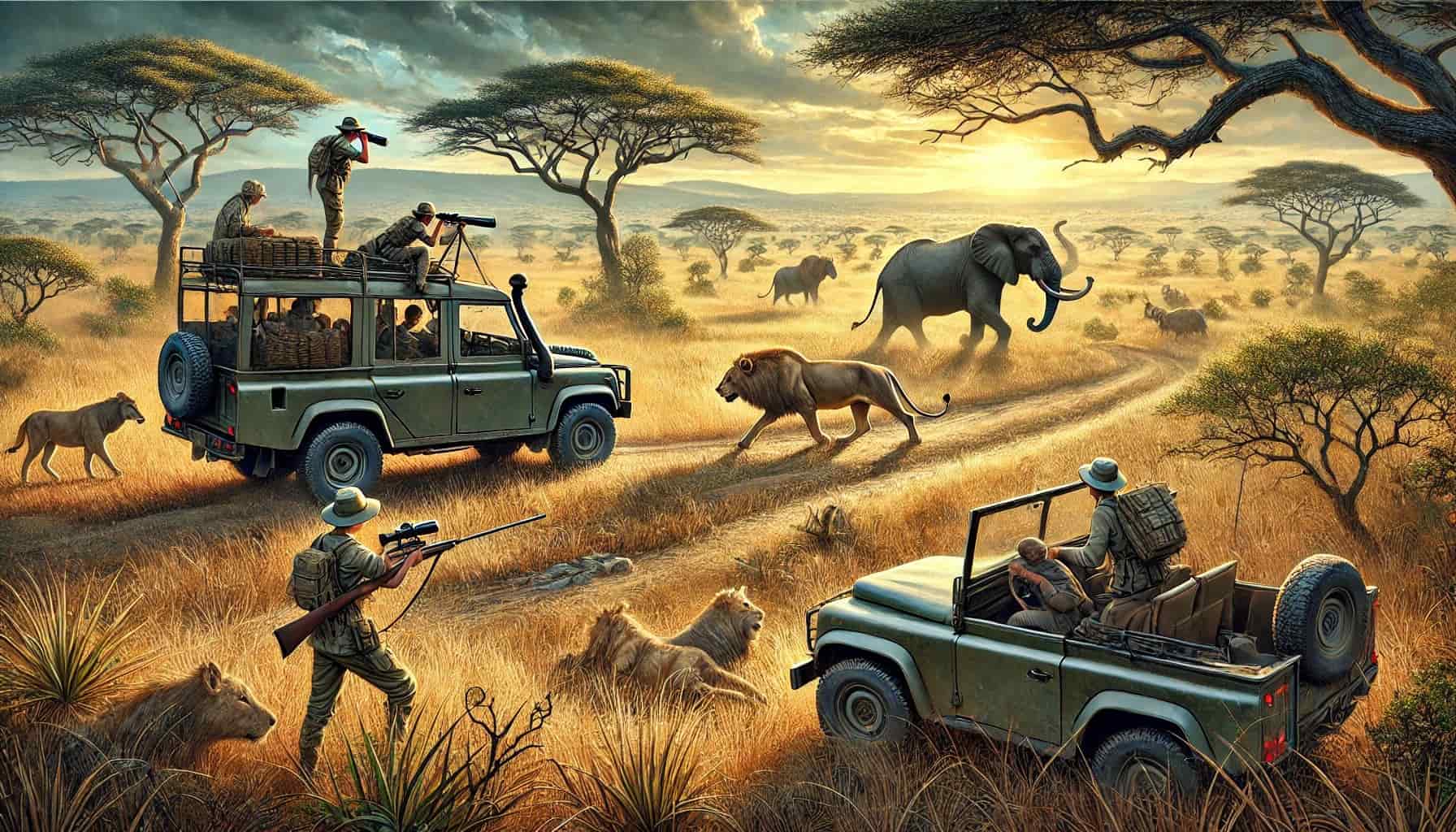It’s natural to decide which safari to visit for your vacation through research, and no doubt Africa is blessed with quite a lot of amazing safari to visit. The Serengeti or Masai Mara parks is an amazing visit for safari. Both are ideal for a safari experience. The Serengeti and Masai Mara share a region and have similar wildlife, yet each offers unique experiences. These African safaris allow you to experience nature in its purest form in the wild. Meanwhile, we have put together information coined out of both personal experience and research to answer “Which safari is better, Serengeti or Masai Mara?” At the end of the content you would have decide on which location you will be going for your next safari visit.
What is so special about Serengeti National Park?

Serengeti National Park is located in northern Tanzania and is renowned for the annual migration of millions of wildlife animals, such as zebras, gazelles, and wildebeest, which draw tourists worldwide. The park covers an area of 5,700 sq. miles (14,763 sq. km) and features savannahs, plains, woodlands, and riverine forests. The savannah, which makes up most of the landscape, is primarily tropical grassland with sparse trees, making it easy to spot and observe animals. The Serengeti plains are found in the southern part of the park.
Here, you can see the “Big Five” animals in their natural environment:
- Lions
- Leopards
- Rhinos
- Cape buffalo
- African elephants
You’ll also encounter other animals such as:
- Cheetahs
- Vultures
- Monkeys
- Hyenas
- Baboons
- Giraffes
- Wildebeest
- Flamingos
Why is Masai Mara National Park famous?

Mara is a national reserve located in Narok, Kenya, covering about 580 sq. miles (1,510 sq. km). Like the Serengeti, Masai Mara hosts a variety of animals and forms part of the Great Migration trail. The Masai Mara features diverse landscapes, including small bushes in the east, the Siria plateau in the west, and extensive plains.
The Masai Mara and Serengeti share an unfenced border, allowing animals to roam freely between the two parks. Consequently, similar wildlife can be found in both parks.
Best Time to Visit the Masai Mara and Serengeti
Choosing when to visit the Masai Mara or Serengeti depends on your preferences. Different seasons offer unique experiences.
Dry vs. Wet Seasons in Masai Mara and Serengeti
The wet season occurs from mid-March to mid-May (long rains) and early November to mid-December (short rains). During this period, the landscape is lush and green. The wet season is a quieter time for tourism, making it ideal if you prefer fewer crowds. In the southern Serengeti, you can witness wildebeest calving during this season.
The dry season, from June to November, features reduced rainfall, making plants sparser and animals easier to spot. This season also offers the best chance to witness the Great Migration. The dry season weather is cool and sunny, with fewer mosquitoes, lowering malaria risk. However, tourist numbers tend to be higher, especially around the Seronera area.
RECOMMENDED: The Best month to go on an African Safari
Peak Migration Periods in Masai Mara and Serengeti

The Great Migration is the world’s largest land migration and a remarkable spectacle. Each year, millions of wildebeest, along with zebras and gazelles, migrate 800 km across the Serengeti. The timing varies but is roughly predictable.
Calving season occurs in February, primarily in the southeastern Seronera region, where thousands of calves are born. By May to July, the herds start migrating, creating breathtaking views. Around July or August, the herds cross the Mara River—a popular highlight for tourists. After crossing, they continue into the Masai Mara National Reserve in Kenya.
From October to November, the herds journey back south for calving, completing the cycle.
Safari Activities and Experiences in the Masai Mara and Serengeti
- Game Drives: Game drives are a fantastic way to see the parks and their wildlife. Morning drives, usually around breakfast time, let you observe animals during their most active period. Full-day drives and night drives are also available, though night drives may incur additional fees.
- Hot Air Balloon Safaris: Hot air balloon rides provide a broader view of the parks, covering more area than ground safaris.
- Walking Safaris: Walking safaris allow you to explore nature up close, enjoying the beauty of the savannah on foot. Many Masai Mara safaris also include visits to nearby Maasai communities, where you can learn about local culture and history.
Accommodation and Lodging in the Masai Mara and Serengeti
Both parks offer a variety of accommodation options to fit different budgets. The Masai Mara has more budget-friendly choices, with rates varying by season.
- Luxury Safari Lodges: Luxury lodges, similar to Western-style hotels, provide fully furnished rooms, often with amenities like pools and spas. Prices usually start above $500 per night.
- Luxury Tented Camps: Tented camps cater to smaller groups and offer a more secluded experience, often with decks overlooking the wildlife. Mobile tented camps are also available and are moved periodically based on the season.
- Budget-Friendly Options: Budget camps, often outside the reserve boundaries, are more affordable, especially in the Masai Mara, with rates under $100 per night.
Accessibility and Travel Logistics
Masai Mara is accessible by road or air. It has six airstrips for flights from Nairobi’s Wilson Airport, and private helicopter services are available. By road, it’s a 4-5 hour journey, while flights take about an hour. Tour companies often provide transport from Nairobi using safari minibuses or 4×4 vehicles.
To reach the Serengeti, travel by road takes around 6 hours from Arusha or 7 hours from Kilimanjaro International Airport. Flights are faster. Within both parks, sturdy 4×4 vehicles are used for internal travel.
Serengeti and Masai Mara Safari Costs
In general, the Masai Mara offers more budget-friendly options than the Serengeti.
- Serengeti: For non-citizens, adults pay a $60 daily entry fee, while children pay $30. A one-week Serengeti safari costs between $2,500 and $7,500.
- Masai Mara: A 3-day Masai Mara safari ranges from $350 to $1,500. Entry fees vary based on accommodation location, with rates of $70 per adult (inside the reserve) and $80 (outside the reserve). You can learn more about the cost by visiting How Much A Masai Mara Safari Costs.
Common Questions about Serengeti and Masai Mara Safaris



0 Comments